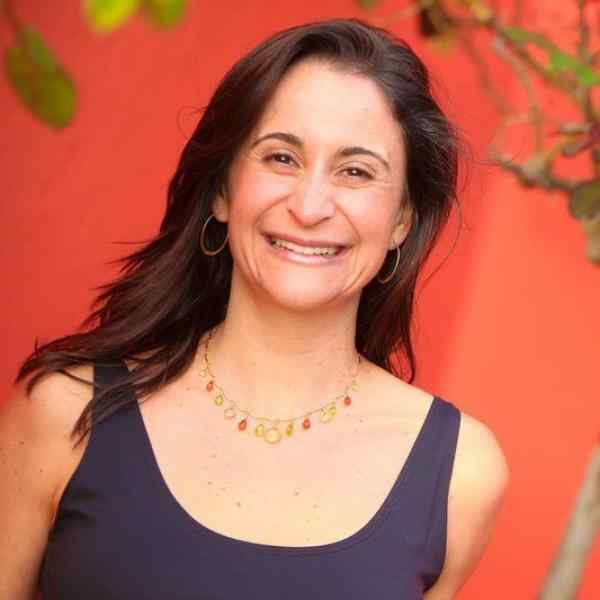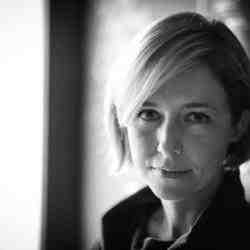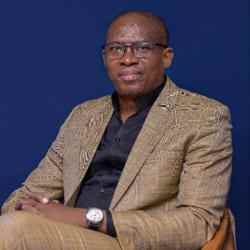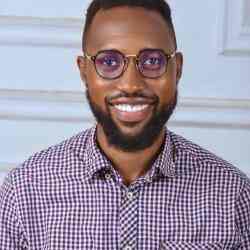Introduction
Abby Falik is preparing a globally-minded generation of leaders by embedding the bridge year into the American higher education system, transforming the way young people transition into college and approach higher education and careers. By partnering with universities to both favor and develop transformative “bridge year” apprenticeships in developing countries, Global Citizen Year is unlocking students’ potential as global citizens and agents of change, while also addressing the rising cost, questioned relevance, and civic isolation of the American higher education system.
The New Idea
As American higher education struggles to stay relevant in a changing society, Abby is pushing colleges and universities to rethink learning priorities and traditional course sequencing that have remained largely unchanged for decades. By re-imagining the traditional “gap year” to be a structured international “bridge year” apprenticeship, Global Citizen Year holds universities accountable for providing real-world exposure and training that complements and integrates our K-12 and higher education systems in the context of a global society.
Abby has transformed the traditional notion of a “gap year” between high school and college, converting a self-piloted wanderlust taken by underachievers or wealthy elite into a transformative leadership experience: An apprenticeship in a developing country, with structured reflection around self-growth, global society, and social impact. In doing so, Global Citizen Year’s goal is to help universities equip first-year students with the social and emotional skills and global perspective necessary to excel in college and 21st century careers. A bridge year acts as a primer for high school graduates, illuminating the world during a critical transition, and providing them with a framework of experience on which to hang the knowledge and skills they acquire in college. Global Citizen Year has started to prove that a bridge year also results in stronger motivation and better academic performance, which could help intercept the one-third of college-goers who do not complete their degree despite thousands of dollars invested. Abby’s long-term goal is to give rise to an entire field of bridge year opportunities, helping the American public to recognize and demand a better transition into the higher education system.
Global Citizen Year re-envisions traditional study abroad models by intentionally structuring reflection on leadership and accountability in a globally connected age, and by welcoming alumni into an active network of leaders. Perhaps most importantly, Abby is partnering directly with universities like Tufts University and The New School to formally incorporate a Global Citizen Year bridge year into the institution, in some cases counting as a full year of academic credit. Not unlike Teach for America, Global Citizen Year aims for its growing coalition of young alumni to be not only better-equipped students and leaders, but also ambassadors for the bridge year movement across disciplines and institutions.
The Problem
The transition between high school and college presents an especially powerful developmental opportunity that many – including students, their parents, college administrators and teachers – believe fails to direct students’ next steps with focus and clarity of purpose. For college students at institutions across the country, stress is at an all-time high and emotional health is at an all-time low: one third of first-year students don’t return for a second year of college, and only 50% of college students graduate within six years. For low-income students, this number drops precipitously to 8%. When held against the rising costs of college (an average of $22,826 at public institutions; $44,750 at private institutions), confidence in the American higher education system is at an all-time low. Simultaneously, 90% of employers believe that college graduates are not fully prepared for a global economy. This result is arguably linked to Americans’ deficit in global exposure, with less than 10 percent of the population venturing beyond country borders annually.
With less federal funding than ever and a business model under fire for rising tuition costs, university administrators are struggling to innovate in ways that effectively address these challenges. Promising new models for college curricula are emerging, but few have been able to leverage existing resources to bring real change to the antiquated system. Amidst limited funding and a longstanding tenure system that incentivizes traditional research, faculty who choose non-traditional curricula are often outliers in a seemingly unchangeable system. Without the support of the institution, innovative professors are unable to infuse a real systemic shift toward leadership development, global awareness, and social impact that employers – and society – need from today’s college graduates. Yet higher education remains one of the biggest resources and opportunities to empower leaders in a changing world, with a record 21 million students matriculating for college in 2013 (up from 6.5 million in 2000).
The notion of a gap year – in Abby’s words, a “bridge year” – is gaining momentum as a noteworthy intervention to higher education’s current trajectory. While accepted in other regions of the world - over 50 percent of students in countries like Norway, Denmark, and Turkey (Nordic Institute for Studies in Innovation, Research and Education) take a year before matriculating in college - it remains rare in the United States, with studies reporting between two and ten percent of students. Furthermore, most bridge year experiences offered in the USA are brief, boutique, or unstructured and reinforce the sense that it is, as the alternative name suggests, a gap between two important things – rather than an intentional, supported life phase that bridges two important life experiences . However, some early adaptors hold promise for the growing field: In 2011, Princeton University pioneered a fully funded global bridge year for twenty of its students, the first of its kind in the country – signaling a new openness to such experiences among the country’s top colleges. Now, institutions like Tufts and The New School are incorporating Global Citizen Year as a formally offered first-year experience.
The Strategy
The Global Citizen Year core program model is a ten-month, intensive leadership training and full immersion in developing and emerging countries across the world. It begins with a one-month orientation in the United States with a curriculum revolving around three key themes: personal growth and leadership, social impact, and global competence . The initial month is followed by an eight-month apprenticeship during which the student lives with a family in a local community. Clusters of 10 Fellows are grouped regionally under the guidance of a “team leader.” Throughout the ten months, Global Citizen Year Team Leaders visits all students once a week to serve as a mentor, coach and support system.
In the countries where Global Citizen Year operates, Team Leaders are locally based year-round and form lasting relationships with host communities, assuring that apprenticeships are mutually beneficial. These important liaisons are usually from the local country but have extensive experience with the American higher education system, as to understand the needs and mindsets of both stakeholders. Over 90 percent of families and communities opt to repeat the hosting experience. Given that apprenticeship sites receive no reimbursement for hosting Fellows, and that host families’ reimbursement is carefully constructed to cover only costs (and not extra income), the high rate of return shows that local hosts find value in their shared experience with Global Citizen Year Fellows.
The diversity and preparedness of the participant cohort has always been a key program design element. Abby intends for each cohort to reflect the diversity of the United States, with representation from various ethnic groups, income levels, and regions of the country. Participants are selected with attention to their passion and leadership potential, as well as their grit and capacity for self-reflection and self-directed learning. Abby pursues a broad recruiting strategy, including social media, referrals from high school counselors and promotion through strategic partners. In 2014, Global Citizen Year Fellows represented 34 states, with 51 percent of Fellows belonging to a minority ethnicity. The organization’s work with parents is crucial: Through a tailored parent orientation, Global Citizen Year is helping to redefine the parent’s role as one who helps her child grow through “stretch” experiences, outside of his/her comfort zone.
Global Citizen Year is working hard to dismantle the myth that a bridge year is accessible to just a privileged few: 80% of students have received some form of financial aid, with 20% receiving fully funded fellowships. In the future, Abby aims to work with government agencies to allot federal resources to bridge year programs. Currently, Global Citizen Year is spending roughly $25,000 per participant. Comparatively, Peace Corps spends about $50,000 per year, and Teach for America raises $25,000 per teacher in addition to salaries provided by the host school. Global Citizen Year’s goal is for earned income to cover 100% of direct Fellowship costs (currently, it covers 65%) within the next five years. Philanthropic money will only be earmarked for growth capital (ie. expansion to new countries and organizational capacity building) and movement-building activities.
The most important impact on cost, however, is Global Citizen Year’s recent progress in embedding the program directly in universities. The organization is partnering with both Tufts University and The New School to pilot two distinct models of the bridge year’s formal incorporation into the American education system. In both instances, admitted students receive funding to complete a bridge year. Tufts University is granting financial aid to accepted students who choose to participate in a “1+4 year” program – completing a Global Citizen Year’s Fellowship, with the premise that students who have explored the realities of the world and have defined their goals for college, will perform better once they matriculate. Perhaps more radical in it’s promise to disrupt our higher education system is The New School’s “1+3 year”model: Global Citizen Year Fellows’ year abroad, accompanied by an online writing and reflection course developed by The New School faculty, fully counts as a complete first-year curriculum. Consequently, students and colleges receive the benefits of the bridge year without the addition of time and cost. The New School has cited the new program as a healthy challenge to the culturally ingrained idea that college translates to a 4-year, campus-bound birthright.
Ultimately, Global Citizen Year aims to help universities change the expectation of how young people transition from high school to college - making the bridge year the norm, not the exception. With two distinct prototypes for partnership, GCY is focusing on cultivating a pipeline of university partners that endorse and incentivize the bridge year. Campus partners can engage on several levels, including actively encouraging or requiring a bridge year, offering a formal deferral to bridge year-goers, giving admission preference to applicants who have performed a bridge year, subsidizing a bridge year, and/or awarding academic credit for Global Citizen Year Fellows. Other plans include integrating bridge years into the common application, and creating a joint application process to both Global Citizen Year and the institutions themselves.
Another key piece in Abby’s mission to change the American talent pipeline is the support from Global Citizen Year’s growing corps of alumni. Not unlike Teach for America, Abby aims to foster the leadership efforts of alumni and, in turn, nurture cohorts of ambassadors who will commit time, talent, and resources to the bridge year movement. As part of growing this core strategy, Global Citizen Year has recently created a director-level position devoted solely to alumni engagement and support. Having experienced a 10x growth over its first five years, Global Citizen Year has accrued almost 300 alumni with nearly 100 in the field today.
As the field grows, Abby is aiming for a measurable language change from “gap year” to “bridge year,” positioning this new transition not as an elite extravagance, but rather a rite of passage young people should take before committing to binding decisions like choosing a major and investigating future career paths. She has begun to change the national conversation through outlets like the New York Times, Newsweek, Forbes, and Fast Company, while also working to encourage peer organizations’ adoption of the term “bridge year” and other language signifying a new pathway to higher education.
The Person
Abby grew up in Berkeley, California, the oldest of three children of parents who believed that the experience of travel, if structured well, unlocked deep empathy and awakened a sense of global citizenship. Traveling since childhood to developing countries in Asia, Latin America, and Africa, Abby was quickly exposed to how people lived in other parts of the world, as well as poverty and inequality on a global scale. In many ways, it laid the groundwork for what would later become Global Citizen Year.
Abby’s earliest memory as an entrepreneur was selling her father’s neckties door-to-door at age 7. At age twelve, she started a summer day camp for other children in the neighborhood, crafting activities such as field trips to the fire station or library. As demand grew, she transferred the project to her younger sister to manage. In high school, Abby established a tutoring program, then formalized the school’s first service requirement and linked it to the school’s freshman writing course. Starting things from scratch seemed intuitive, and she followed the same process that she does now: See an opportunity, identify a solution, learn what works, and stitch it into the existing structure - whether a school, a neighborhood, or a curriculum.
When Abby was sixteen, she spent a summer in rural Nicaragua. Living with a family and teaching in the community’s schools, she realized that her hosts, despite their material poverty, were far from victims; instead, they were resourceful, persistent and attuned to solutions to lift themselves out of poverty. The experience transformed her, and she left Nicaragua committed to address social justice on a global scale. She maintained ties with the community that took her in, and later returned with 600 books to work with the community to set up their first library. All of Abby’s educational, personal and professional pursuits in the decades since have focused on answering one question: How can we ensure that many more, and more diverse, young Americans have access to similarly formative and defining experiences?
The idea of Global Citizen Year began to germinate in Abby’s undergraduate training and Master’s research in education, where she designed a model to transform the traditional study abroad field. Drawing on this work, she joined the team at NetAid (now Mercy Corps) where she designed the Global Citizen Corps – a national network of young people committed to ending global poverty. When Mercy Corps acquired NetAid, they continued investing in the program, which today reaches hundreds of thousands of young people in more than a dozen countries around the world. Eventually, feeling frustrated and constrained by the lack of business training and talent in the non-profit sector, Abby went to Harvard Business School to develop the skills and networks needed to launch Global Citizen Year as a sustainable and scalable enterprise.
Winning the “pitch” competition at HBS, Abby left Boston for San Francisco with a $3,000 gift to back her idea, and formally launched Global Citizen Year in 2009.




